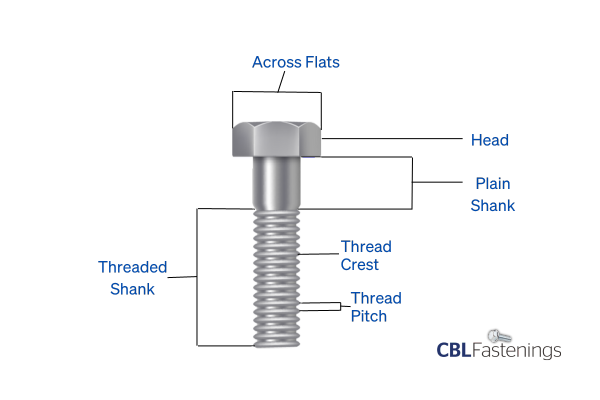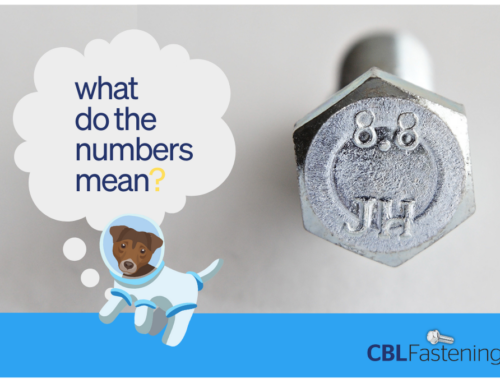When trying to identify a screw or bolt it’s helpful to know some of the terminology. A bolt is a threaded fastener typically consisting of several parts, each with its own name and purpose. The main parts of a bolt include:
Across Flats (A/F): This is the distance between two parallel surfaces on the head of a screw or bolt, or a nut, mostly for torque transmission by positive locking.
Head: The head is the top or uppermost part of the bolt. It is often shaped in various ways, such as hexagonal (hex head), square (square head), round (round head), or other designs. The head provides a surface for applying torque (usually with a wrench or socket) to tighten or loosen the bolt.
Plain Shank: The shank is the long, cylindrical, and unthreaded portion of the bolt that extends from the head to the end. It provides the structural support and connects the head to the threaded portion.
Threaded Shank: The threaded portion of the bolt is the section that has spiral threads running along its length. This threaded part engages with a threaded hole or a nut to create a secure connection when turned. The threads may be fine or coarse, depending on the specific application.

Thread Crest: The thread crest is the highest point of the external threads on the bolt. It’s the part that comes into contact with the internal threads of a nut or threaded hole.
Thread Pitch: The thread pitch is the distance between adjacent threads on the bolt. It’s typically measured in millimeters or threads per inch (TPI) in the imperial system.
These are the primary parts of a bolt, and they can vary in size, shape, and configuration depending on the specific type of bolt and its intended use. Different types of bolts may also have additional features, such as washers, lock washers, or special coatings, to enhance their performance and durability in various applications.





